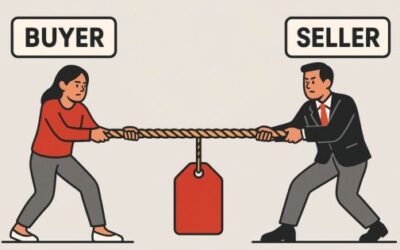When was the last time you analyzed the deals in your sales pipeline? Have you ever taken a look and thought, “This looks like fluff?” Deals that could look promising on paper but you know they’ll never close, or conversations that are prematurely labeled as opportunities.
Combing through your pipeline to identify real deals is an operational drain. In fact, I recently spoke to a team that spends eight hours a month sifting through their deals to pull out fluff. That’s 96 hours a year trying to decipher what’s real. Why?
Premature Qualification
Sellers are too quick to call anything an opportunity. The moment a buyer shows a sign of interest or asks for pricing they’re added to the pipeline. Commonly referred to as happy ears, this tendency happens when a seller hears what they want to hear muddying the reality of what’s really happening.
To be fair, it’s not entirely the sellers fault. Leadership has played a role in this especially when traditional qualification frameworks like BANT (Budget, Authority, Need, Timeline) are involved. WAIT. Before you dismiss me because you’re thinking, we don’t use BANT, ask yourself, are you using fancy BANT? An offshoot of BANT with different names disguised but still operationally the same?
Seller Focused Approaches Don’t Work
Traditional qualification methods such as BANT tell salespeople whether a prospect can buy and not if they should buy. They focus on the seller, emphasizing criteria that benefit the seller’s needs without considering the core issues of the buyer. This leads to pipeline bloat and missed opportunities.
Limitations of Traditional Qualification
Interest isn’t urgency
A prospect showing curiosity or asking questions does not mean they are ready to act. Interest is fleeting and may not signify a need for change.
Budget is fluid
Budget is rarely set in stone. If the problem is significant, businesses often find the funds to address it. Qualifying on budget alone can disqualify strong prospects early.
Timelines are flexible
Timelines can change. Buyers might accelerate or extend their timelines based on the urgency of their problem and potential business impact.
Relationships are overvalued
Building relationship is important, but relying on a relationship without a clear, agreed-upon problem builds false confidence. Deals stall despite the strong rapport because they lack a solid foundation of problem alignment.
Relying on their outdated qualification frameworks fills your pipeline with “maybes” and creates misleading forecasts.
If you want to ensure your pipeline is filled with real, actionable opportunities—not just ‘maybes’—it’s essential to rethink how you review and manage your deals. A structured pipeline review process helps sales teams validate deal quality, remove fluff, and focus on opportunities that actually drive revenue.
Qualify based on Problems
Build an accurate and actionable pipeline by shifting from traditional qualification methods to problem-based qualification. Focus on assessing whether a prospect has a significant problem that your solution can solve. Instead of asking if they can buy, ask does the prospect have a problem that we can fix?
When your team qualifies by understanding and addressing real issues, the pipeline reflects real opportunities. This problem-centric approach directs your time and resources towards prospects who are more likely to move forward, boosting close rates and overall sales efficiency.
Ensure the Prospect Agrees on the Problem
Confirm that the prospect acknowledges the problem after identifying it. Make sure they recognize and understand the issue, otherwise, they won’t take action. Ask direct questions that help them see the problem and understand the impact.
When the prospect agrees on the problem, you lay the groundwork for productive conversations.
Confirm their Desire to fix it
Make sure the prospect wants to solve the problem. Recognition isn’t enough. They need to have the motivation to act. Gauge their level of urgency by asking questions that reveal the impact to their business and their commitment to resolving it.
When a prospect shows a strong desire to fix the problem, you know they are serious and more likely to move forward. This step helps you prioritize the prospects who are ready to take action.
Assess their Willingness to engage
Confirm that the prospect is willing to go through the process needed to solve the problem. When the prospect commits to the journey, it signals their willingness to find a resolution. This step confirms your pipeline is full of prospects who are interested AND prepared to take action.
Problem-based qualification example
I once engaged with a potential client who, after three calls, still hadn’t made it into my pipeline. They showed interest, asked about pricing, and discussed timelines. However, when I pressed for more about their business problems, team dynamics, and long-term goals, they resisted and couldn’t clearly identify the issues.
Outcome
Many of the happy ears sellers would have considered this an opportunity. Without clear confirmation of the problem and their willingness to engage, I chose not to add them to the pipeline. They chose a traditional solution and I avoided wasting time a deal lacking substance.
Reinforce Problem-Centric Qualification
Align your sales team around problem-based qualification. Make it clear that if a prospect doesn’t have a problem with significant impact, they are not a real opportunity. Start creating a more accurate pipeline that leads to better forecasting and stronger sales outcomes by ditching the checklists.



0 Comments